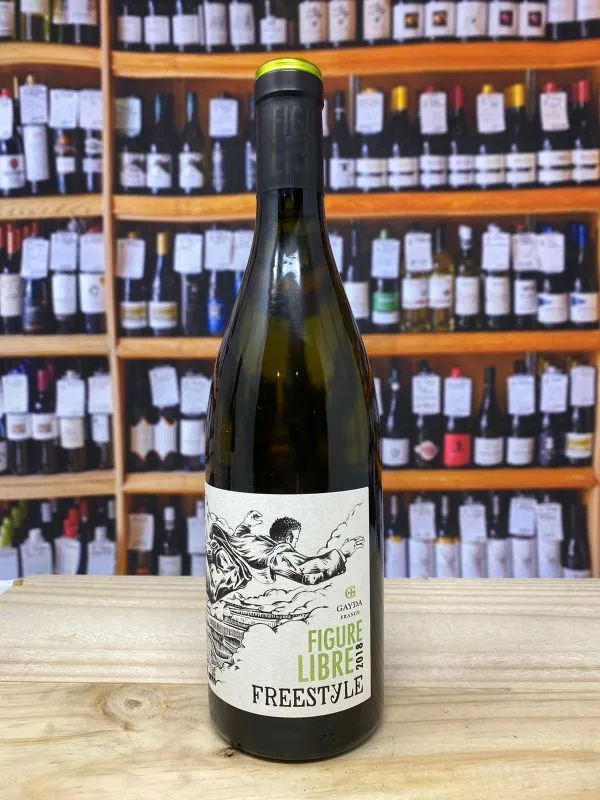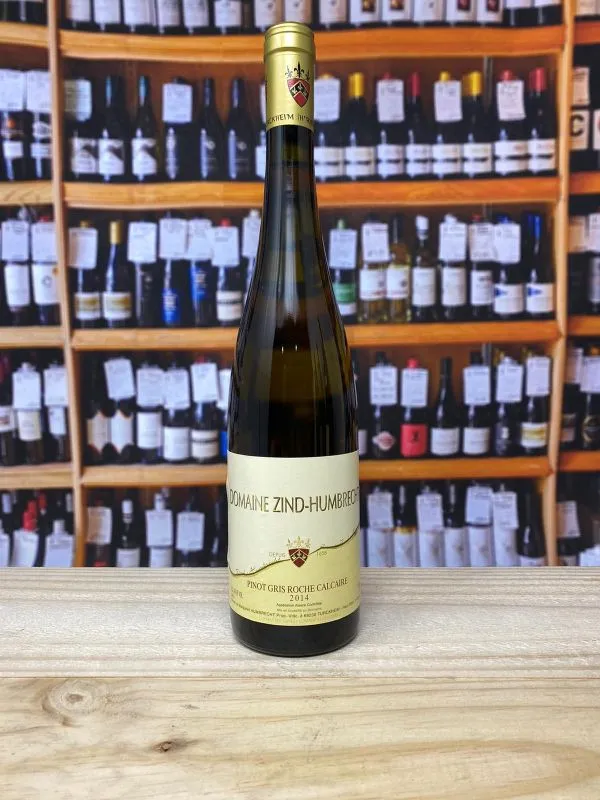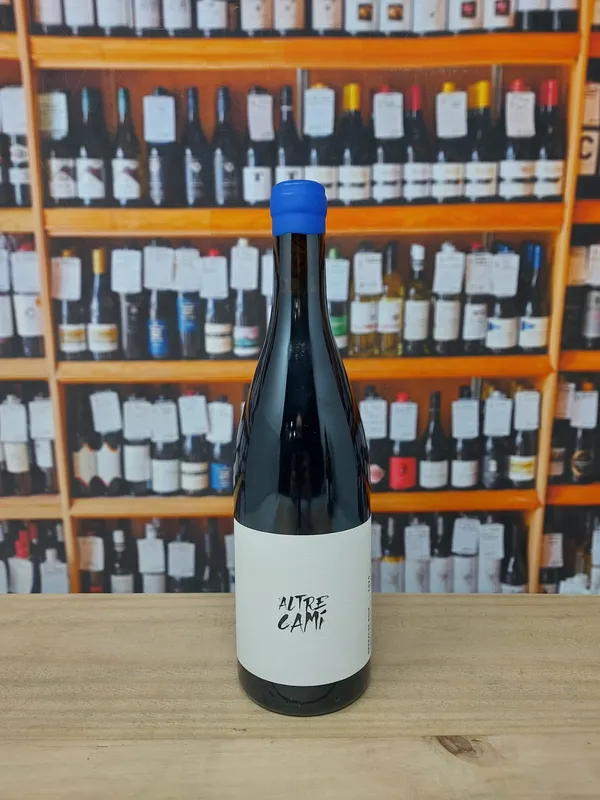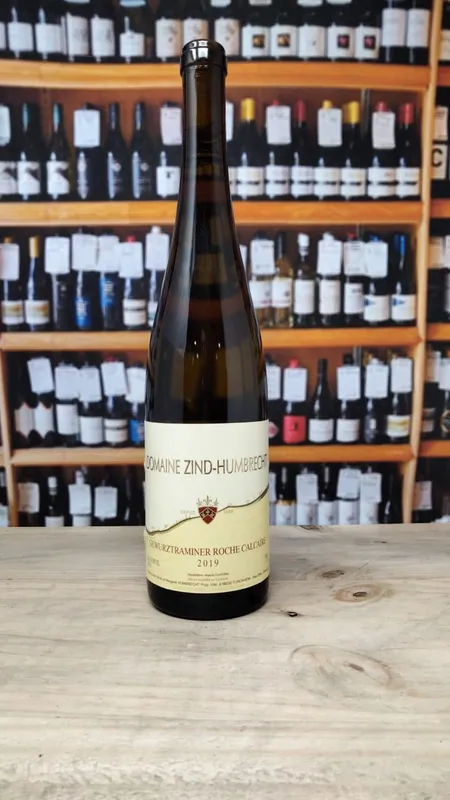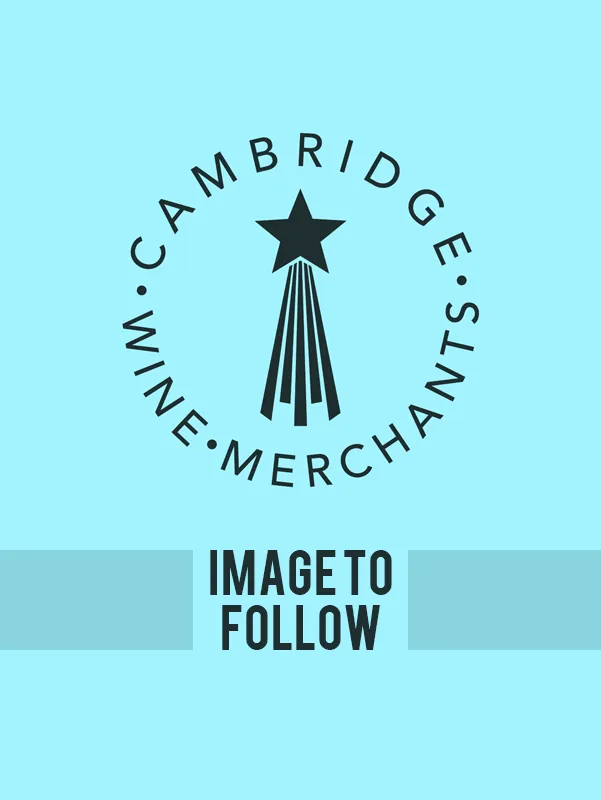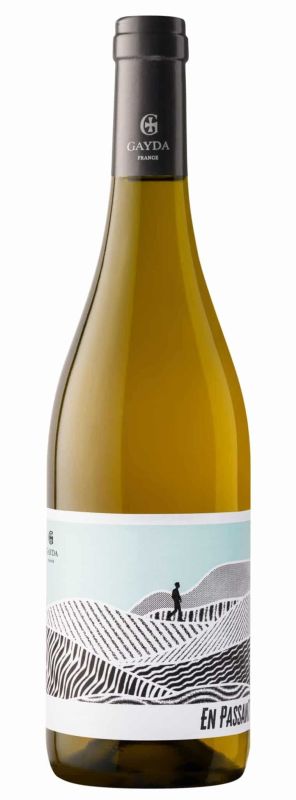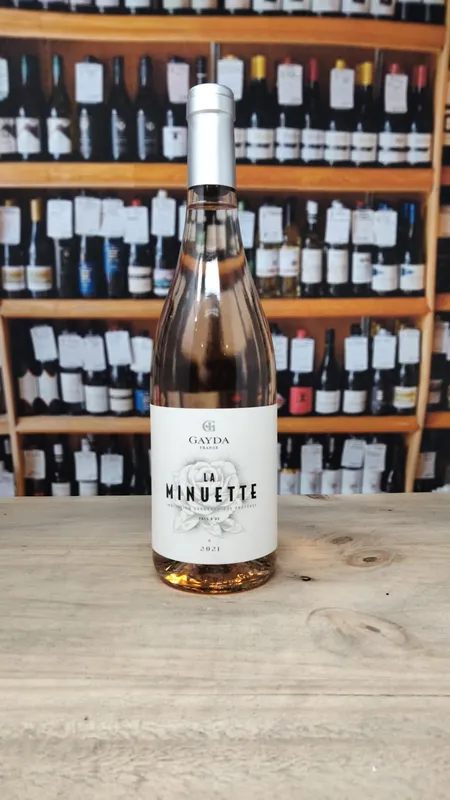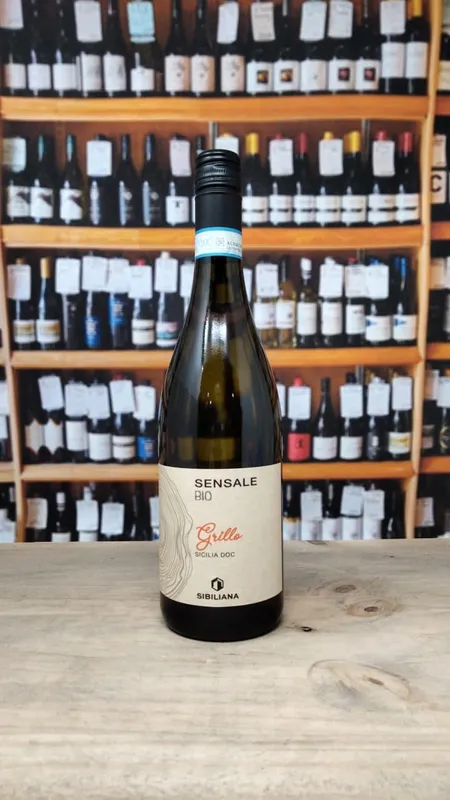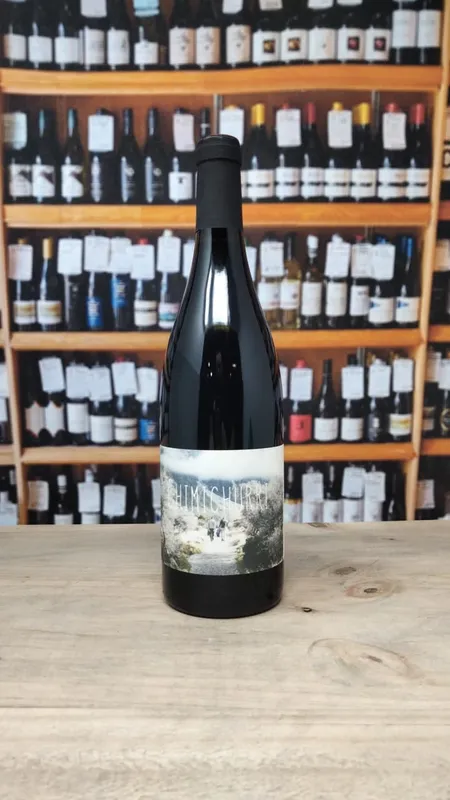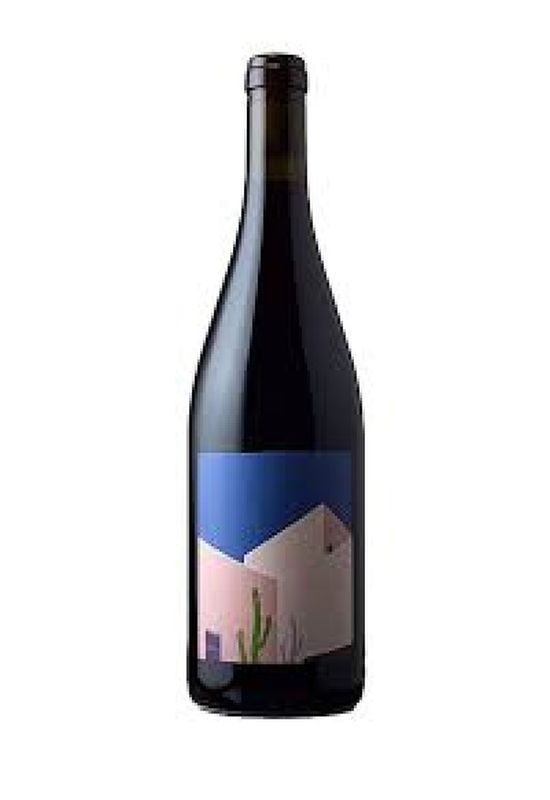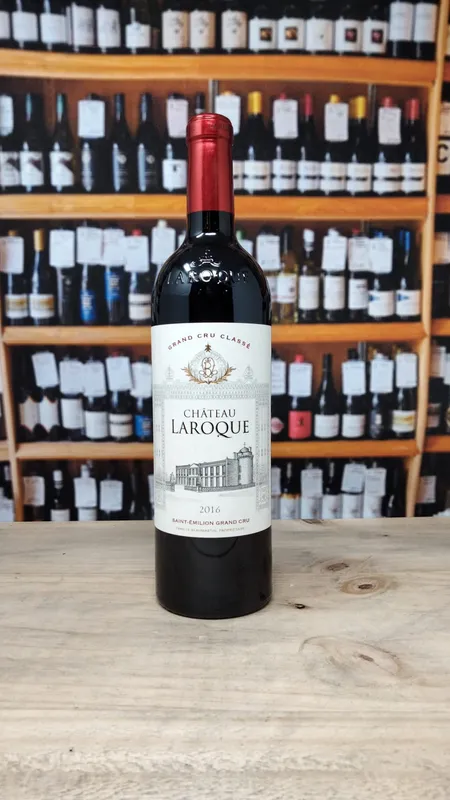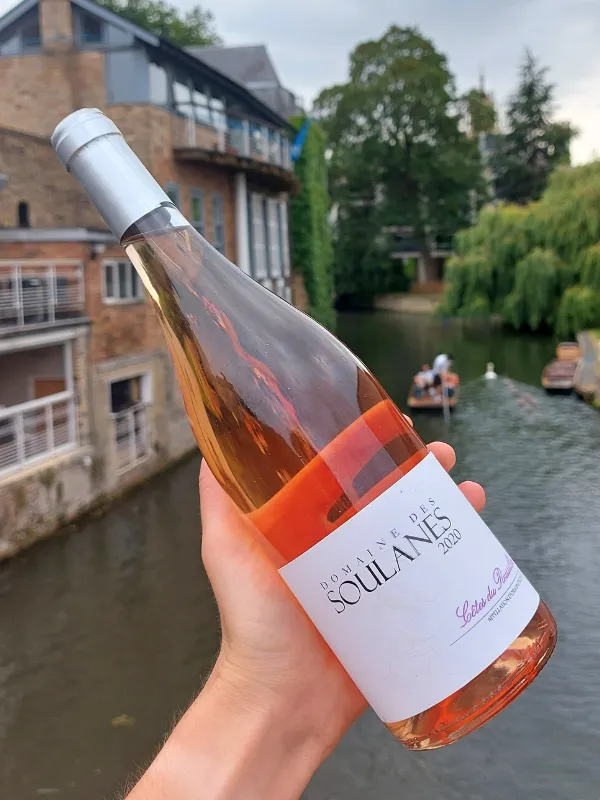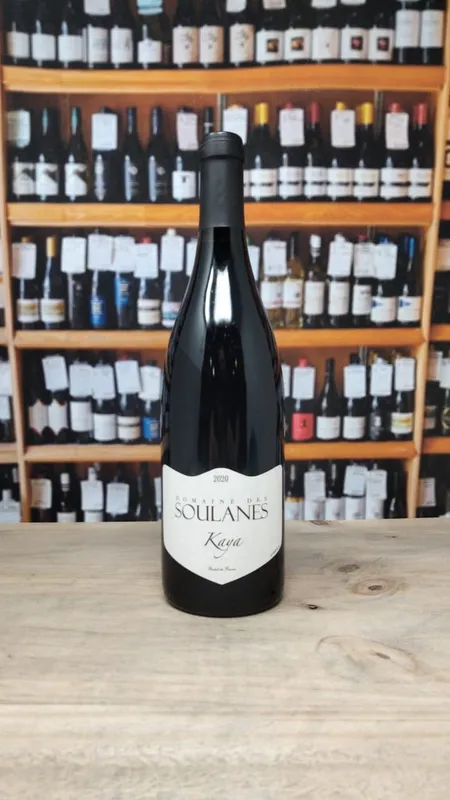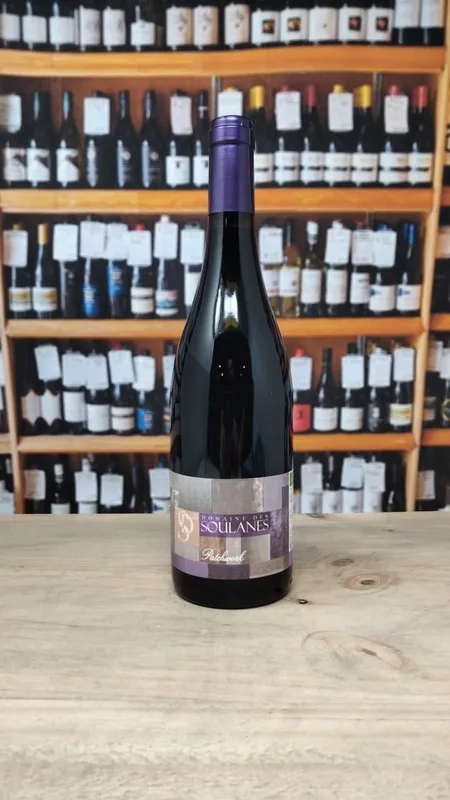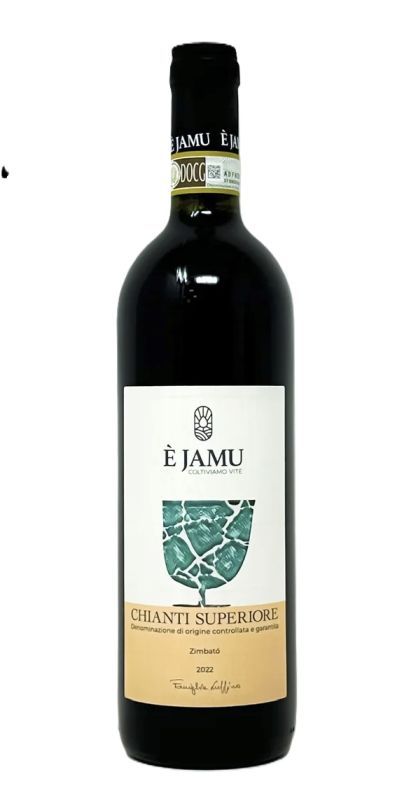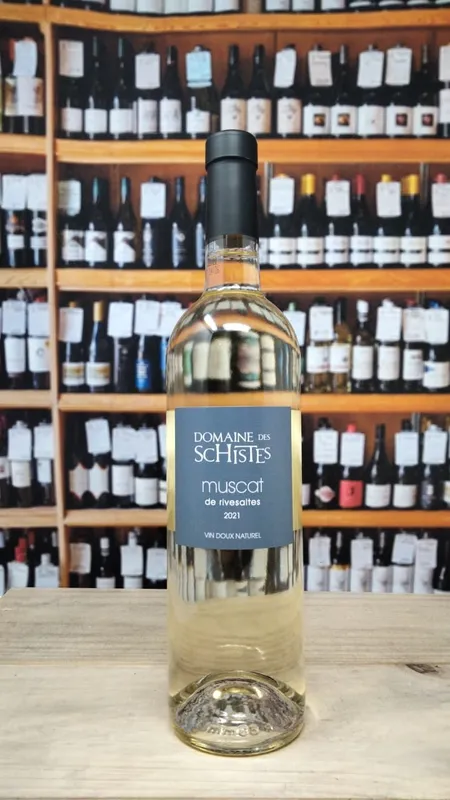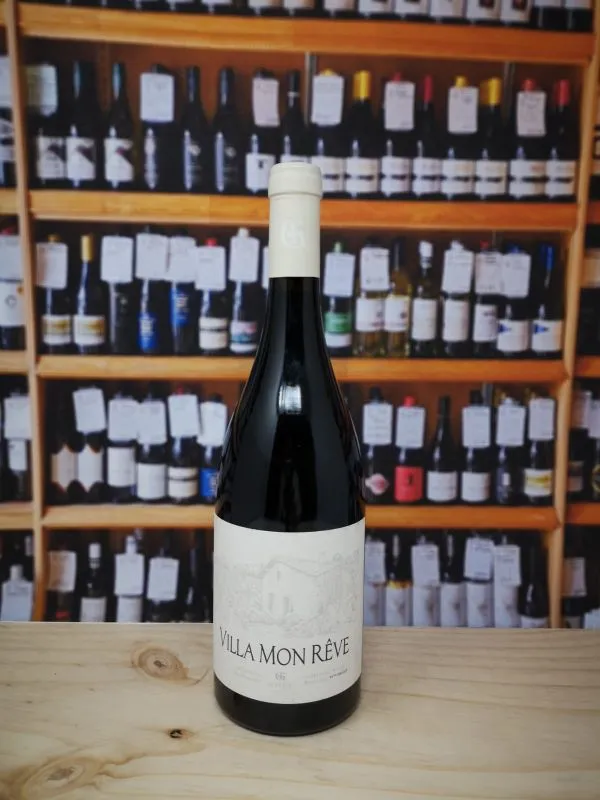Organic and Biodynamic
Whether Certified Organic, Biodynamic or farmed under a sustainable scheme these environmentally low impact wines are made with care for Mother Earth
There are 191 products in this category
80
475
90
Domaine Gayda
Certified organic grapes from Roussillon. Long with light bitterness with some saltiness. Nice tension, medium body and real structure.
80
115
26
Domaine Zind-Humbrecht
When Zind-Humbrecht acquired the Clos-Saint-Urbain vineyard on the Grand Cru Rangen in 1977, about half of the land wasn’t under vines and needed to be planted. This very steep vineyard requires a lot of hard manual work and some surfaces were left abandoned in the middle of the 20th century. Most vintages, the vines planted in the 70s and 80s are separated from the very old vines that qualify as Grand Cru. This wine clearly show all the originality of a volcanic geology which is unique in Alsace. They are also cultivated the exact same way as the older vines (ploughing with a winch for example). The biggest difference would be on the crop size. The Roche Volcanique is made with low yields, but the older vines produce even less! For these ‘younger vines’ they aim for very healthy grapes (no noble rot) in order to achieve a dry wine. Bright pale-yellow colour. Expressive fruity and smoky nose (smoked ham, grilled hazelnuts). The palate has a velvety texture, lots of depth and length without too much power. Gentle balance showing a saline acidity on the finish. Very easy wine to enjoy today. Dry, but with a certain softness due to a good dry extract that brings volume on the palate. Obviously Rangen in taste…
80
610
30
Domaine Gayda
"Intense with a luminous ruby colour and garnet nuances, the nose reveals elegant notes of ripe black fruits and fresh red fruits, notes of black cherries and raspberry. Complex spicy notes and fine mineral smoky touches, a light and elegant infusion at low temperature. The palate is soft and light, the fruity and gourmet flavours dominate. Mineral and smoky touches bring freshness and highlight beautiful tender and perfectly integrated tannins. The result is balanced with a persistent long finish. " Dominique Laporte, Meilleur Sommelier de France, Meilleur Ouvrier de France Sommelier De-stemmed harvest - Natural vinification without the addition of sulphur - Very light extraction - Infusion, at low temperature - 15 days maceration before pressing - Only the free-run juice is kept. Soil type: Gneiss. The Commune: Cassagnes, Roussillon Aged in concrete eggs for 9 months.
80
115
26
Domaine Zind-Humbrecht
This is an astonishing and almost perfect expression of Gewurztraminer; floral, smoky and spicy, then terrific concentration and balance and length, with some juicy sweetness detectable and adding to the enjoyment of the whole. Very, very fine. The sedimentary limestone geology, mostly located on the Vosges mountains foothills in Alsace, has always been the prime choice for producing long lived and structured Gewurztraminer wines. The presence of clay, more or less important, brings a cooler element in the soil, slowing down the ripeness process and preserving better acidity. The presence of limestone influences the aromatic profile and texture of the wine. They become more spicy, less floral, with a recognisable tighter tannic structure so crucial for the balance of the wine. Gewurztraminer, more than any other in Alsace, requires an accomplished skin ripeness. Failing so can end up in an over aromatic, not complex and bitter wine. The quality of the terroir will help greatly, but so does harvesting later! Since the acidity is naturally low, harvesting later isn’t affecting the wine as much as other grapes that would suffer more from acidity loss. All the grapes going into this wine are sourced from the estate's top single vineyards or Grands Crus, where they use the 'younger' vines. Pale yellow gold colour. The nose is very expressive showing intense exotic fruits aromas (litchi, mango, passion fruit, grapefruit…). It sounds like a cliché, but the wine is actually elegant and racy. The palate is fresh, quite tense and vibrant. Nice sweetness on the finish very well balance by ripe tannins. This is a classic medium sweet Gewurztraminer that shows that it originates from good vineyards. It can be enjoyed young but will develop more complexity (spiciness) with age.
80
475
90
Foncalieu
Wonderful. The best value Pinot Noir we have found from the Languedoc. Fine, fruity and elegant. Simply delicious.
80
610
30
Domaine Gayda
A limited edition wine from Gayda that changes with every vintage. And the 2023 is an exciting new take indeed! Beautiful Rolle (Vermentino) and Viognier from the Minervois are picked when perfectly ripe then pressed slowly in whole bunches, with very gentle racking and seeing careful vinificaton without sulphur, at low temperature - ageing on lees - the Rolle in stainless steel vats, and the Viognier in a mixture of concrete eggs and stainless steel tanks. This is SPARKLY BRIGHT and DAZZLING with good richness also. The pale yellow colour is elegant and brilliant. On the nose, a discreet subtlety reveals notes of Granny Smith apple, lime and fresh almonds, characteristic of the blend of Rolle and Viognier grapes. On the palate, the wine is full and generous, supported by a lovely acidity and a slight, attractive bitterness on the finish. A mineral touch adds fascinating depth also. The flavours of fresh pear, acacia flower, almond and white peach unfold harmoniously, offering you a refined, beautifully balanced treat of a wine. Unique and utterly, utterly marvelous. A LOT of wine for the money.
80
475
90
Domaine Gayda
‘La Minuette’ blended rosé comes from La Livinière limestone terroir. Its pale colour and floral bouquet represent the ‘Minuette’ variety of rose planted in Kenya by Tim Ford in 1982, during his 25 years of rose production in Africa. A nod to both the past and the future, ‘La Minuette’ exemplifies estate values of tradition and modernity. Mourvèdre, Syrah, Grenache and Cinsault from outstanding organic Minervois La Livinière vineyards. A lychee-tinged colour evokes a very Provençal style. On the nose, finesse and elegance dominate, offering a refined aromatic bouquet. Notes of fresh grapefruit and tart raspberries blend harmoniously with vine peach, while cherry blossom adds a delicate floral touch. On the palate, the wine is gourmand, with flavours of strawberry and raspberry supported by fresh notes of clementine and bergamot zest. The texture is crisp and tangy, balanced by a light minerality on the finish. Really outstanding for the cash.
80
455
24
Sibiliana
Beautiful fruity wine from Sicily, great value for money with notes of grapefruits and citrus like lemon and pear. Bright and pleasing acidity. Notes of mineral enhance the refreshing taste. Nice pairing with fish and drink chill dishes.
80
145
20
Basket Range Wines
Cracking good Chardonnay from Sholto at Basket Range. On the nose - lemons galore. On the palate, it's fresh and energetic, with a fine line of citrussy acidity, hints of florals and white peach. Oak is present but well-integrated and offers nice toasty complexity on the finish. Stock up - this is a drinker! From Sholto Broderick at Basket Range Wines: Vineyards: This wine comes from two vineyards within a close proximity of our vineyard and winery. The Deanery vineyard is situated in Balhannah, 7km east of us. We pick this vineyard first, being in a slightly warmer site. The clones of this chardonnay are i10v1 and Mendoza (a small-berried clone giving greater skin to juice ratio, that for example, is the clone in Kumeu's Mate's Vineyard). Ali’s vineyard is situated in the heart of the Piccadilly Valley, 8km to the south-west of our vineyard. This vineyard has some of the oldest Chardonnay vines in the Adelaide Hills. Ali's vineyard produces fruit with great intensity and acid drive and is a combination of g9v7 and i10v1 clones. Winemaking: Each parcel of chardonnay was direct-pressed then cold settled before racking to French barrique and puncheon barrels (10% new) for fermentation and maturation for 9 months. Some battonage was used during maturation. There is a tight freshness here, with white stone fruits and a healthy dose of lemon on both the nose and palate. Gorgeous length too, helped by a touch of gentle oak and lees complexity. It all adds up to a beautiful, understated wine, but with plenty going on under the hood. Serve at 12c.
80
610
20
Domaine Odyssee
Natural, organic Syrah from a beautiful vineyard in Baixas, Roussillon. Grown with great care and wildly fermented and aged in old oak barrels for 12 months. Lifted, expressive Syrah with pretty floral notes and minerally fresh red and black fruits with some spicy, meaty notes and soft texture but with some matter and with a welcome, silky fruit character. Charming Syrah. The name 'Chimichurri' is a nod to Vincent's beloved Argentina (see below) because of the wines spicy, meaty character. Vincent Carreras has been working in wine industry for 13 years. For nine years he worked for a winery in the south of the Roussillon, Andy Cook’s Mas Cristine and Coume del Mas. Working in the vineyard, cellar and commercial activities - the whole shebang! For four years now he has been employed by a family winery based in Maury - Clos des Vins d'Amour. Who work 25 hectares organically in the west of Roussillon. Mostly in commercial activities, but also working in the cellar. Alongside this, in 2016, Vincent started a new project - Domaine Odyssée. The 3.5ha of vineyards are in Calce and Baixas, in a heart of Roussillon. The sites are small, but unquestionably some of the most beautiful we have seen. Vincent draws on the experiences mentioned above and his time in New Zealand (2011), Argentina (2012) and Bordeaux 2011 to help fully realise what he has there in his exceptional terroir. Vincent works organically, using no weedkillers, no chemical products. He works by hand and with organic fertilizer (he is in conversion right now). He harvests his parcels by himself with friends and family. In the cellar, Vincent’s philosophy is a minimum of intervention "To keep the fruit and the terroir.". The wines are extracted gently with just a little pump over. No filtration, no fining. The only preservative is a little dose of sulphites in very low quantities at bottling "It is important for me the stabilise the wine in respect of the future customers".
80
145
20
Basket Range Wines
Delicious, delicate and ethereal, herbaceous with wet-earth notes, brimming with red candy and sour cherry on the back palate. Serve lightly chilled with felafel, zatar, or spiced meats! Gorgeous wine. From Sholto Broderick at Basket Range Wines: Vineyards: Our vineyard situated at our property in Basket Range comprises 75% of this wine. It is predominantly 777 clone Pinot Noir from a north facing aspect, as well as some mv6 from the adjacent south facing block. The Manyara vineyard in Balhannah comprises the balance of this wine (25%). This fruit is 100% mv6 clone and was harvested at a similar time in late March to the other Pinot in this wine. Winemaking: Each parcel of fruit for this wine was fermented in 1500 and 2000L vats, with the sparing use of whole bunches, in what was a cooler year. Maceration ranged from 7-14 days, depending on the parcel, with daily gentle pump-overs for cap management. The wine was maturated in seasoned French barrique barrels for 8 months. The earlier-picked fruit, showing prettiness and tension, underwent a gentle fermentation process. This Pinot Noir showcases notes of bramble and forest floor, with a delicate, fine-tea like tannin structure that adds to its overall elegance and complexity.
80
145
20
Basket Range Wines
A new cuvée here from Basket Range - a juicy, fruity, delicious chillable red blend. From Sholto Broderick at Basket Range Wines: This wine is comprised predominately of Merlot and Petit Verdot from our vineyard. These were macerated with the use of whole bunches and with gentle handling, which gives lifted fruit and a spice from the stalks. The components were then blended with small amount of Chardonnay and Sauvignon Blanc. This makes for a red wine with gentle tannin and a lifted mid-palate. The Bantam is a dynamic wine that showcases juicy soft plums, white pepper, and graphitic tannin, with a savoury, highly drinkable quality. Designed for earlier drinking, it's best served cooler, at about 12c.
80
145
20
Basket Range Wines
From Sholto Broderick at Basket Range Wines: This wine is the evolution of the style my father made using the same fruit; Cabernet Sauvignon, Merlot and Petit Verdot. These vines were planted first in the early 1980s and at our new adjacent vineyard in 2001. Growing these varieties and making them into wine, I see the quality of the site and concentration of the fruit. Each block sits at a northern facing aspect on loamy clay over sandstone. The wine shows ripeness of tannin, structure and balance, while having energy and elegance. A reflection of an excellent site for these varieties. This is a Cabernet Sauvignon predominant blend (75%) with Merlot (19%) and Petit Verdot (6%). Each component was fermented in 2000L vats and matured in French barriques for 10 months. The 2022 Estate Cabernet is a pretty special wine for me. The 2021 Estate Cabernet was awarded the "Best Cabernet Trophy" at the Adelaide Hills Wine Show in 2022. I feel the 2022 vintage release is the best job of it I have made so far. Only 230 dozen produced.
80
195
34
Chateau Laroque
This Claret is fresh and balanced. The blend is Merlot-based and the wine is aged in French oak barrels for 12 months, giving a nice aroma of spice and wood smoke. The palate is fleshy with a hint of plum, the tannins fine and firm, leading to a generous finish. Drink now to 2036
80
610
10
Domaine des Soulanes
Like a great Provence, but one from an actual great terroir and not just sandy soils. This year Syrah and Carignan joining the Grenache and Mourvedre of the outstanding debut in 2020 which garnered high praise from critics and customers. In the words of one customer "“You’ll be pleased to know you weren’t wrong with that Rosé (Dom. des Soulanes Cuvee Rosé). It is one of the best I have ever tasted and I’ve tasted a few, many with a much bigger price tag. Actually I prefer it to Garrus (£100), d’Esclans (£30). How much more have you got?”" Published on decanter.com in June 2022: Domaine des Soulanes, Rosé, Côtes du Roussillon, Languedoc-Roussillon, France 2021 "The delicate, somewhat restrained nose hides a fine wine on the palate. It's a slightly darker pink in colour in the glass, too. Exuberant and playful in the mouth, with bowls of fresh cranberries, white raspberries and goji berries. A tangy citrus and lemon thyme note on the finish leaves you suitably refreshed and ready for the next sip. This may even have some intriguing potential for ageing. Certified organic, hand harvested". 90/100 Drinking Window 2022 - 2025
80
610
20
Domaine des Soulanes
100% old vine Carignan that was bred all in concrete tanks. Notes of leather, black cherries, plums and savoury herbs all emerge from this medium-bodied, fresh, lively wine. This is seamless and gorgeous stuff from Daniel Laffite.
80
610
20
Domaine des Soulanes
Wonderful new cuvee from the brilliant Daniel and Cathy Laffite based in Tautavel. These guys have some of the most beautiful vineyards we have ever seen, and they are worked with utmost care and respect in an organic way. Glorious Grenache and Carignan deliver so much pleasure with beautiful fruit, great minerality and supple, savoury tannins. DELICIOUS.
80
615
22
Dom. Gramiller
Deep, juicy, weighty but fresh and textural 100% old vine Clairette fermented and bred in clay amphora with no additional sulphites at any stage. Really pure and elegant - pears, honey and white flowers on this full bodied Southern Rhone white wine. A triumph. A future classic. Bravo Frederic Julien!
80
455
26
E Jamu
Great entry-level Chianti Superiore with wonderful character. Carefully farmed organically and also certified. Fermented with only indigenous, wild yeasts. An intense red colour with violet reflections. The nose is nicely full and Intense - persistent, with marked notes of violets and sour cherries, wild berries and blossom. The palate is medium-bodied, very pure and direct with great Sangiovese character. Persistent, long and silky with a kick of classic Sangiovese tannin. Serving cool, with a half hour in the fridge beforehand is recommended here. Great Chianti is hard to find under £20 these days - this is a real find. The organic fruit (100% Sangiovese) is destemmed and softly crushed. During fermentation there is just a little pump over daily. After fermentation, the wine stays on skins for 15 days in steel tank. The wine is racked off and sees 9 months in cuve.
80
455
26
E Jamu
Sangiovese 80%, Canaiolo 15%, Malvasia Nera 5%. Manually harvested in mid-September from all the company's organic vineyards, the Sangiovese from Rabizza and the Lago, the Canaiolo from Vertigne and the Malvasia Nera from Tombolo. The grapes are carefully destemmed and wild fermentation takes place with the grapes natural yeasts. Fermentation takes place In thermo-conditioned steel tanks with maceration on the skins for two weeks with gentle pumping over The wine is then bred in older French oak tonneaux (large barrels) until the spring following the harvest. The wine is put to bottle and rests for a further nine months. This is a real, authentic Tuscan bargain with wonderfully characterful fruit from beautiful established vineyards blended beautifully by the master Giampaolo Chiettini. Floral, earthy, brilliant and vibrant wine. The legendary and completely wonderful Giampaolo Chiettini helps the young (very young!) Rocco (24!) and his sister Meca (25!) on their beautiful estate in DOC Valdarno di Sopra. A very exciting estate to watch at this embryonic stage.
80
455
26
E Jamu
A quite unique expression of 100% Canaiolo from Jamu's organic vineyards. Ripening later than their Sangiovese in the latter half of September. The beautiful fruit (a selection of the very best bunches from the vineyard) is picked when perfectly ripe by hand and sorted in small crates. 100% destemmed and gently crushed, the wine is left to ferment on its wild yeasts. Macerated for two weeks with a little, very gentle pump-over daily. The wine is run off to older French tonneaux and left to rest for nine months then put to bottle for a further six months before release. Direct, long and pure wine. Some darker as well as brighter red fruits mix deliciously on a lovely savoury, fresh palate. A must try - think lamb rubbed in rosemary and salt cooked on the grill. Think Sangiovese with lighter tannins. Marvellous wine and a must-try this spring and summer. The legendary and completely wonderful Giampaolo Chiettini helps the young (very young!) Rocco (24!) and his sister Meca (25!) on their beautiful estate in DOC Valdarno di Sopra. A very exciting estate to watch at this embryonic stage.
80
475
90
Domaine Gayda
80
295
28
Domaine des Schistes
Produced from beautiful organic Muscat grapes grown on a great schist terroir with a top-soil of schistous marl in the commune of Tautavel, facing south-east. The grapes are composed of 80% Muscat Petits Grains and 20% Muscat d'Alexandrie. Yields are very low at around 20 hl/ha. A manual harvest takes place in the morning, when the grapes have an alcoholic potential of 14.5°/15°. Very long direct pressing, at low pressure, followed by coarse settling overnight in the open air. Fermentation takes place in vat, at a temperature of 20-23°C. It is stopped by mutage with certified organic neutral alcohol (representing a maximum of 10% of the final volume). Aging takes place on fine lees, in closed stainless steel vats, sheltered from oxidation. This is the finest and freshest Muscat de Rivesaltes we've found. We are very happy to be shipping this great example from the finest of growers to the UK.
80
475
90
Domaine Gayda
Winemaker Vincent Chansault is particularly happy with this release of Gayda's top, single vineyard Syrah from a beautiful site high up in La Liviniere. Extrememly limited. One for Cote-Rotie lovers. The 'Dream House' in question was built by the owner in the vineyards for his ailing wife to spend her last days. She miraculously recovered and her story inspired Vincent to make his dream wine from Syrah in La Liviniere.

